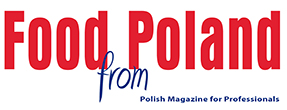And what products do Poles reach for most often? The report shows that confectionary – sweets, cakes, pastries, candy bars, yeast cakes and waffles – are what 44% of respondents reach for. Slightly fewer, 43%, choose fruit and vegetables. The podium is rounded off by nuts, seeds and pips with a score of 28%. Yoghurts, cheese and dairy desserts came next, with 27% of respondents indicating this. Salted products, i.e. crackers, sticks and crisps, are chosen by 20% of respondents, while vegetable and fruit juices are chosen by 13%.
Polish consumers’ preferences differ depending on their age. Young people (18-24 years old) most often snack on sweet products (63%) and yoghurts, cheeses and dairy desserts (42%), and least often choose vegetable and fruit juices (22%). In contrast, over-65s prefer fruit and vegetables (49%) and sweets (31%), while strongly avoiding salty snacks (4%).
According to NielsenIQ data, from April 2023 to March this year, the snacks market in Poland reached a value of PLN 27.1 billion. Of the sweet ones, Poles spent the most on prepackaged cakes and biscuits (PLN 3.9 billion), pralines (PLN 2.9 billion) and chocolate bars (PLN 2.8 billion). On the other hand, chips and crisps dominated the salty ones – Poles spent PLN 5 billion on them in the period under review.
Consumers most often buy snacks at discount stores. According to NielsenIQ data, this sales channel is responsible for 42.5% of the volume and 51.8% of the value of sales of snacks in Poland between April 2023 and March 2024. Supermarkets and discounters recorded the most dynamic growth in sales value during the period under review. Only these two channels also recorded volume growth.
Craving for sweets
In the course of a year, almost 1.4 billion chocolate bars and impulse wafers are sold in Poland. This means that the average Pole eats more than 35 on average per year, assuming a population of 38 million in our country. These are figures from CMR, which looked at how sales of these two categories of sweets are performing on the Polish market.
Between April 2023 and March 2024, the number of packets sold of these snacks fell – by more than 1% for impulse wafers and by around 5% for chocolate bars. The sales channel that lost the most was hypermarkets. According to CMR research, consumers are most likely to buy these types of products in small-format shops, which account for 42% of chocolate bars and 34% of impulse wafers sold. Discounters are also very popular.
The small format offers a wide selection of the sweets in question. From June 2023 to May 2024, the average number of chocolate bar variants in this sales channel was 25. Chocolate wafer proposals were slightly fewer in the period under review, with an average of 18 versions. Shelf width in both cases increased, as did the price per product. The average cost of a bar exceeded PLN 3, an increase of around 13%. Waffles, on the other hand, became slightly less expensive, by around 11%, with consumers paying around PLN 2 per piece.
Healthy trends
For 60% of Poles it is important to eat healthily. This is according to the ‚Plate of the Future’ report prepared by the Food for the Future think tank and the Food for the Future Interdisciplinary Centre for Analysis and Cooperation. Food is supposed to support immunity, improve mood or influence good looks. But what does „healthy food” mean? The modern consumer considers sugar-free, lactose-free, gluten-free, organic, pro- and prebiotic-containing products and plant-based options to be such.
Healthy food also means valuable snacks. And more and more people are starting to treat these as meals. This is influenced, among other things, by busy lifestyles – people lack the time to prepare breakfast, lunch or dinner, so they prefer to reach for a quick snack to satisfy their hunger. According to the ‚5 Huge Snacking Trends 2024’ report by Exploding Topics, up to 70% of Millennials prefer snacks to meals.
Manufacturers predict that the ‚snacks as meals’ trend will continue to grow over the next few years, with consumers increasingly turning to snacks instead of meals – choosing the healthier ones. In the global market, nuts, trail mixes and seeds already have a share of more than 40%. They are followed by protein bars and plant-based snacks. The international trend for nutritious snacks can also be observed in Poland. „Muesli bars recorded the highest growth in sales volume (in kgs), up by as much as 10.4%. Nuts and grains, ready-made cakes and impulse wafers also had positive indicators. (...) The dynamic growth in sales of muesli bars and nuts and grains may be a result of the growing awareness of Polish consumers and their desire to change their eating habits to healthier ones,” comments Wojciech Rydzewski of NielsenIQ, analysing data from April 2023-March 2024. Honorata Jarocka, Principal Analyst at Mintel, adds that, according to research, 45% of Polish consumers try to reach for snacks that fall within a certain calorie range.
Enhancing wellbeing is also becoming a new task for snacks. Consumers want them to have a positive impact on sleep, concentration and energy levels. This is why they look for beneficial ingredients such as vitamins or adaptogens in their composition. They are also increasingly turning to plant-based products – this for health and environmental reasons. „66% of snack eaters make an effort to choose snacks with specific health benefits (e.g. supporting digestion or cognitive abilities). Plant-based snacking is also an interesting area for innovation, with 64% of respondents in Poland agreeing with the statement that this type of snacking is good for health,” adds the Mintel expert.
And if snacking can replace a meal and have a positive effect on the body, why can’t it satisfy at least some appetite for the world? The authors of ‚5 Huge Snacking Trends 2024’ point out that global consumers, as a result of the pandemic and travel restrictions, have started to look for exotic flavours from different countries in snacks. In Poland, popular choices include mochi from Japan or Mexican chips.
Brand loyalty
Brand loyalty is one of the most important factors influencing consumer purchasing decisions. When standing at a shop shelf, customers are more likely to reach for a product from a brand they know and value than for a similar product from another manufacturer. There are product categories that are characterised by particularly high levels of loyalty.
According to Listonic Ads1, customers are generally more loyal to brands that have a strong presence in the market and are easily accessible. This makes them more recognisable, which makes consumers feel more trust and are more likely to buy them. Price is also an important factor – a more favourable price increases the chance of attracting and retaining customers. And if a competitive price goes hand in hand with high quality, a positive consumer experience is built, which is the basis for brand loyalty. Identification with the world view, values and prevailing trends is also an important element.
Listonic Ads took 10 product categories under the microscope and examined consumer attachment to brands in these segments. Medicines took first place, followed by drinks and confectionery. Behind the podium were spirits, ready meals, kitchen accessories, children’s products, breakfast products, salty snacks, and sauces and dips.
When analysing the snack market, two groups are most important: sweets and salty snacks. The former includes candy bars, cakes, chocolates, pralines, sweets, jelly beans, drops, gum, lollipops, as well as cakes and cereal bars. As the authors of the report noted – although sweets are classed as impulse purchases, in which the brand is not necessarily important, in the case of planned purchases it plays an important role. When consumers consciously decide on a particular sweet, they choose the logo of the one they know well. So, when sweet snacks appear on shopping lists, they are specified – specific names are shown to go into the basket. From May 2021 to May 2023, 13.23% of products added to shopping lists were from a well-known brand. In the confectionery category, the most popular were Delicias and Kinder.
When it comes to salty snacks, i.e. nuts, pretzels, sticks, crisps, roasts, nachos and crackers, one in 11 products from this category is added to shopping lists with the indication of a specific brand. As the authors of the study emphasise, price plays a major role in this segment, which is sometimes more important to consumers than loyalty. However, in the case of planned purchases, there is a significant group of people who choose the products of a particular brand despite the higher cost. In this category, customers are attached to Lay’s, Cheetos and Pringles.
We traditionally divide the snack market into sweet and salty, with the snacks themselves intended to satisfy a small hunger or craving. However, when you take a closer look – you see a whole range of flavours, functions and properties. Enthusiasts of the ‚a little something’ are not in short supply – some are devoted to their favourite types of nibbles, while others are attracted to new flavours and innovative ideas.
1 “FMCG category report. Analysis of Poles’ attachment to brands based on the Brand Loyalty Index. Analysis for 2021-2023”, Listonic Ads. The research was carried out based on data from users of the Listonic application.












